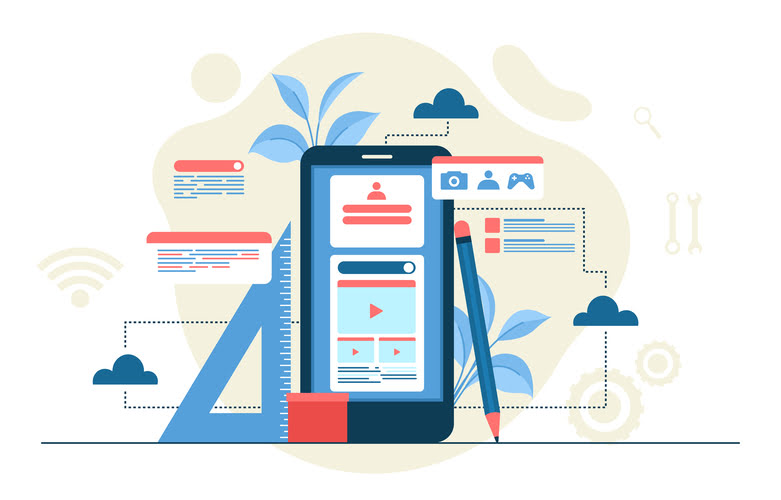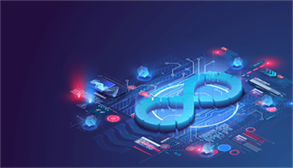Содержание
Finding a cloud provider that provides all three layers of the cloud—in connected and unprecedented ways—is essential. Moreover, businesses need a complete, integrated platform with intelligent solutions at every layer. Cost & Efficiency – Maintaining an onsite server can divert both money and human resources away from other parts of a business that produce revenue growth.

IT departments are under increasing pressure to transform from cost centers to value creators – and now must lead the charge when it comes to innovation. Cloud computing and Platform-as-a-Service can be a catalyst for CIOs who want to successfully maintain a bi-modal IT environment that encourages rapid innovation while securely supporting the stable, mission-critical core of the business. From an end-user perspective, cloud consumption means either using a cloud application or consuming cloud infrastructure. Regardless of resource location, however, understanding infrastructure resource usage and consumption remains critical, because it represents an organization’s ability to serve customers, innovate, and lower operational expenses. Cloud computing provides the speed, scalability, and flexibility that enables businesses to develop, innovate, and support business IT solutions. Read our cloud computing trends article to get a clear image of what’s currently shaping the cloud market.
What Is Cloud Computing?
Providers are already responding with solutions for handling massive data sets (e.g., Google BigQuery and Microsoft Azure Data Lake). Providers will continue competing for market share, so expect public cloud offerings to evolve. Research suggests that entry-level IaaS will see the most significant changes as vendors look to offer more than https://globalcloudteam.com/ ordinary compute and storage instances. AWS Lambda enables developers to run code for apps or back-end services without having to provision or manage servers. Google Cloud Functions and Azure Functions offer similar serverless services. Skype and WhatsApp take advantage of the cloud’s ability to provide users with remote access to data.

During the late 1950s and early 1960s, companies began to use large mainframe computers and a process called time-sharing. You can access cloud-based data from anywhere and on any device as long as you have an Internet connection. Intel®FPGAs work together with CPUs to provide custom acceleration with excellent performance per watt. Because these multi-purpose FPGAs can be reconfigured, you can use them again and again.
For IT organizations that depend on on-premise infrastructure, capacity planning is a perpetual challenge. Organizations must ensure that their IT infrastructure is sufficiently robust to meet capacity demands at peak times, which often results in purchasing excess servers and other equipment that is rarely used. Cloud computing services are typically available on-demand, meaning that organizations can recruit more processing power, virtual machines or storage fog vs cloud computing space at the touch of a button. This gives organizations the flexibility to scale capacity up or down as needed with minimal waste. In the PaaS model, the customer manages the data and application while the service provider owns and maintains every other part of the technology stack. This set-up is ideal for code developer who wish to focus on application development while having a third-party service provider manage the back-end infrastructure.
As opposed to other cloud computing models, BMC has no virtualization overhead, while it still provides cloud-native environments deployable in less than 2 minutes. The private cloud requires the owner to build and maintain the underlying infrastructure. This model offers the same versatility and convenience as other clouds, but the strategy enables you to keep hardware management and security measures in-house.
This segment includes all the equipment the provider requires to host data (storage, dedicated servers, OSes, networks, security protocols, etc.). Intel technologies may require enabled hardware, software or service activation. // Intel is committed to respecting human rights and avoiding complicity in human rights abuses. Intel’s products and software are intended only to be used in applications that do not cause or contribute to a violation of an internationally recognized human right. A hybrid cloud gives you the best of both worlds by bringing together private and public cloud resources. With consistent, predictable performance in either the public cloud or on-premises,Intel® Xeon®Scalable processors give you fast, reliable processing across your cloud environments.
Check out our article on cloud architecture for an in-depth look at all the moving parts within the cloud’s backend. Server virtualization enables the system to abstract and provision ready-made IT services. Relies on strict cloud security protocols to facilitate the safe exchange of data. As long as there’s a working Internet connection, the end-user can access cloud-based files. By the late 1990s and early 2000s, industry giants were providing services over the Internet . In the early 1950s, organizations started using computers but found it too expensive to buy a device for each department.
Cloud computing is the delivery of computer system resources, including applications, virtual machines, containers, data storage and processing power over the internet. Cloud computing services are offered and managed by cloud service providers. Cloud service providers own and maintain the IT infrastructure, including computer and networking hardware and software, needed to deliver on-demand computing resources to their customers. Cloud computing gives you access to computing, storage, and networking resources on demand. These resources can come from either your own data center or from a cloud provider.
Blog Posts : Cloud Computing Services
Cloud customers benefit from automatically having the latest innovations and emerging technologies built into their IT systems, because the cloud provider takes on the work of developing new capabilities and features. The goal of Bare Metal Cloud is to provide all the benefits of bare metal resources combined with the flexibility of cloud computing. Check out our public vs private cloud article to see which of the two infrastructures is a better fit for your business. Using the cloud enables a company to rely on ready-made IT resources, a strategy that offers a line of unique business benefits. A private cloud built with Intel® technologies provides control and high availability for mission-critical workloads and security.
- A hybrid cloudunites your public and private cloud so that you can share applications and data between them as needed.
- As long as there’s a working Internet connection, the end-user can access cloud-based files.
- While this frees your business from having to own or maintain hardware, your IT team must still manage operating systems, databases, and applications.
- Rather than investing heavily in databases, software, and hardware, companies opt to access their compute power via the internet, or the cloud, and pay for it as they use it.
A reliable, high-performance cloud starts with a foundation of server processors that can meet the needs of highly demanding applications, including analytics and AI. Intel® processors and accelerators help you achieve workload optimization in the cloud for virtually any application. The main difference between hybrid cloud and multicloud is the use of multiple cloud computing and storage devices in a single architecture. For organizations that struggle with disconnected business processes and data silos, the cloud offers a way to transform their business operations. Complete cloud application suites are not modular but instead are connected, eliminating data silos and enabling integration and intelligent business decisions. They are a good way to describe how people are working together today, how they would like to work together ideally, and how their work will be shaped with the introduction of new cloud technology.
Q: What Is The cloud?
IT resources and network users can be added or removed from the network without wasted investment or time to scale. A hybrid cloud combines different on-prem and cloud environments (on-site hosting, colocation, public cloud, private cloud, etc.) to create a unified IT environment. All integrated systems communicate with each other, so there’s a strong emphasis on orchestration and automation features. BMC provides direct access to bare metal hardware combined with the self-service properties of cloud computing.

The virtual private cloud mixes public and private offerings—a VPC user has exclusive access to an isolated segment of a public cloud. This model is a compromise between a private and public model in terms of price and features. Deploy your hardware in our enterprise-grade data center in Phoenix, and we’ll supply you with all the power, networking, and bandwidth you need. The private cloud’s resources are available only to a select group of users, typically all working for one organization. A private cloud runs either in on-site data centers or within a third-party colocation center. Refer to our article on cloud deployment models for a close look at each type and a guide to picking the best option for your use case.
Apac Organisations Warm To Cloud Networking
These single-tenant, bare metal servers eliminate many of the risks above while still providing cloud-like agility (self-service provisioning, various automation features, near-instant scalability, cloud-native environments, etc.). IaaS offers the most basic computing services, so the in-house team of a client company must have a high level of IT expertise to run the system efficiently. VMs enabled us to run multiple systems within a single physical device, a concept that had a massive impact on the progress of cloud computing. Understanding workload performance, security, integration, and data volume is critical in making a cloud hosting decision. Explore the latest cloud computing strategies to increase flexibility, optimize costs, and improve efficiency.
Edge computing will continue to grow as a go-to solution for cloud-based apps that must process data in real-time. Companies will increasingly turn towards cloud-based AI and machine learning services. SMBs will benefit the most from ready-to-use advanced services as they cannot create such software in-house. SaaS will see the most significant rise out of all cloud service types in the coming years. Expect to see the market for SaaS products get close to $200 billion by 2024. Serverless computing will continue to grow in popularity as companies realize the value of entirely freeing teams from infrastructure management.
The increased adoption of cloud computing in enterprise IT environments has led to the development of new cloud computing architectures. Each architecture represents a different method of deploying cloud services, and each one offers unique advantages and disadvantages. The three models in common use today are public cloud, private cloud and hybrid cloud.

Automation provides users with a high degree of self-service to provision resources, connect services, and deploy cloud workloads. The frontend enables the end-user to access and manage cloud-based data. This component includes all the elements visible to the consumer, such as browsers, GUIs of web apps, etc. In 1969, J.C.R. Licklider pushed the concept of on-demand computing to the next level. Licklider created the Advanced Research Projects Agency Network, a precursor to the Internet that connected computers across the US and enabled users to access data from remote locations.
Types Of Cloud Computing
SMBs report that using cloud computing is 40% more cost-effective than an equivalent in-house system. Cloud computing offers low-latency connections, but these levels of responsiveness may not be enough for some use cases. If you have an app with an extremely low tolerance for latency, consider combining the use of the cloud with an edge server. If you are looking for a more thorough analysis of the cloud’s pros and cons, check out our article on the advantages and disadvantages of cloud computing. Software as a Service means a client runs the complete app on the cloud and that the provider makes it available to end users over the Internet.
Choosing the most appropriate cloud service models, which range from Infrastructure as a Service to Software as a Service , can ensure you get the right level of resources and support. Modern cloud solutions help companies meet the challenges of the digital age. Instead of managing their IT, organizations have the ability to respond quickly to a more fast-paced and complex business landscape. With modern cloud economics, the cloud delivers business value and reduces cost, helping enterprises achieve their full business potential with their cloud spend.
Infrastructure
The vast majority of enterprise applications and infrastructure still remains on premises, although that is rapidly changing. Software as a Service – This is basically a software distribution model in which a service provider hosts applications for customers and make them available via the internet so they don’t take up limited on-premises resources. Platform as a service is a cloud computing service in which a provider delivers hardware and software tools to users. Most PaaS web-based tools aid development and end-users access them via APIs, web portals, or gateway software.
In Depth : Cloud Computing Services
Relying on the cloud removes the need to set up and maintain an expensive on-site data center. SAP offers a robust technology platform to support your business needs. Compare SaaS, PaaS, and IaaS and find out what you can expect from each “as-a-service” model. Most companies now use a mix of the three – and the lines between them can sometimes blur. At Big Data London, data quality and intelligence took center stage as companies strive for fast and efficient delivery of …


